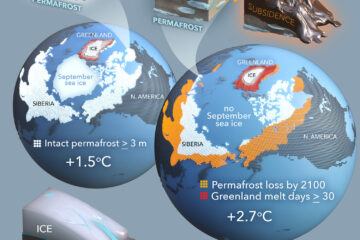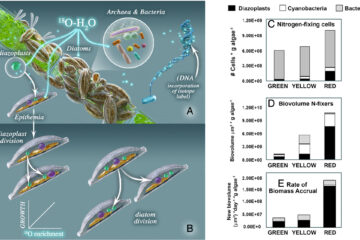Leaf litter quality affects aquatic insect emergence: contrasting patterns from two foundation trees
Reciprocal subsidies between rivers and terrestrial habitats are common where terrestrial leaf litter provides energy to aquatic invertebrates while emerging aquatic insects provide energy to terrestrial predators (e.g., birds, lizards, spiders). We examined how aquatic insect emergence changed seasonally with litter from two foundation riparian trees, whose litter often dominates riparian streams of the southwestern United States: Fremont (Populus fremontii) and narrowleaf (Populus angustifolia) cottonwood. P. fremontii litter is fast-decomposing and lower in defensive phytochemicals (i.e., condensed tannins, lignin) relative to P. angustifolia. We experimentally manipulated leaf litter from these two species by placing them in leaf enclosures with emergence traps attached in order to determine how leaf type influenced insect emergence. Contrary to our initial predictions, we found that packs with slow-decomposing leaves tended to support more emergent insects relative to packs with fast-decomposing leaves. Three findings emerged. Firstly, abundance (number of emerging insects m−2 day−1) was 25 % higher on narrowleaf compared to Fremont leaves for the spring but did not differ in the fall, demonstrating that leaf quality from two dominant trees of the same genus yielded different emergence patterns and that these patterns changed seasonally. Secondly, functional feeding groups of emerging insects differed between treatments and seasons. Specifically, in the spring collector-gatherer abundance and biomass were higher on narrowleaf leaves, whereas collector-filterer abundance and biomass were higher on Fremont leaves. Shredder abundance and biomass were higher on narrowleaf leaves in the fall. Thirdly, diversity (Shannon’s H′) was higher on Fremont leaves in the spring, but no differences were found in the fall, showing that fast-decomposing leaves can support a more diverse, complex emergent insect assemblage during certain times of the year. Collectively, these results challenge the notion that leaf quality is a simple function of decomposition, suggesting instead that aquatic insects benefit differentially from different leaf types, such that some use slow-decomposing litter for habitat and its temporal longevity and others utilize fast-decomposing litter with more immediate nutrient release.


